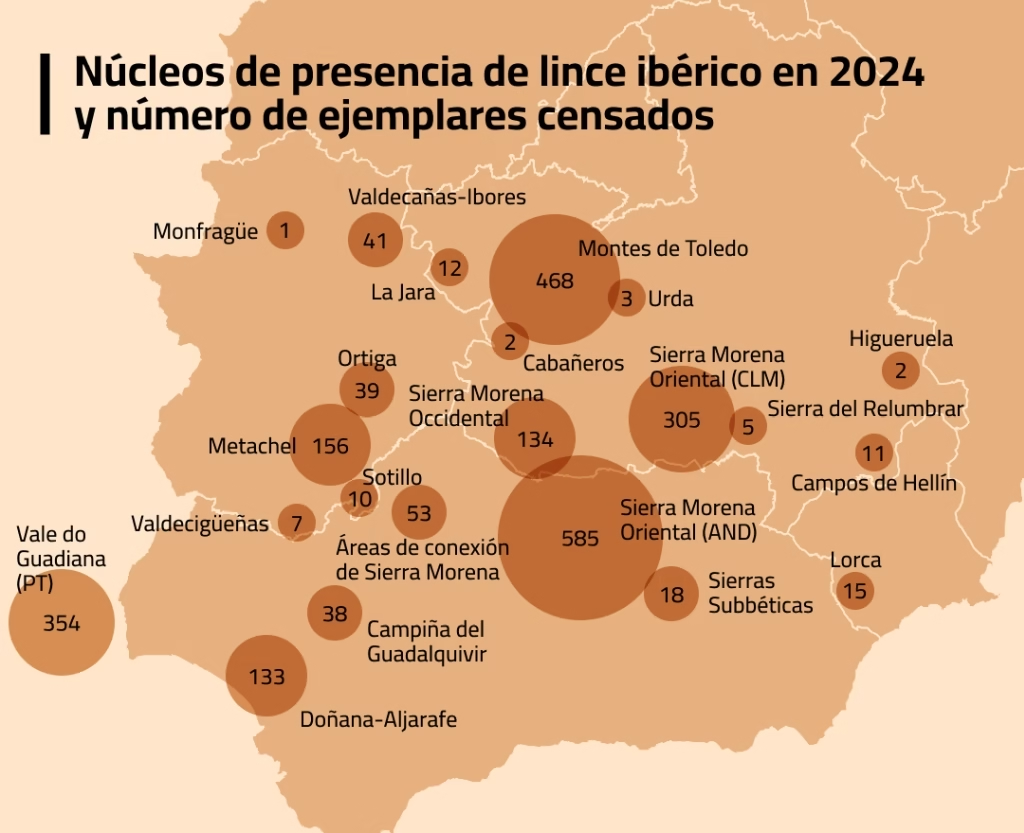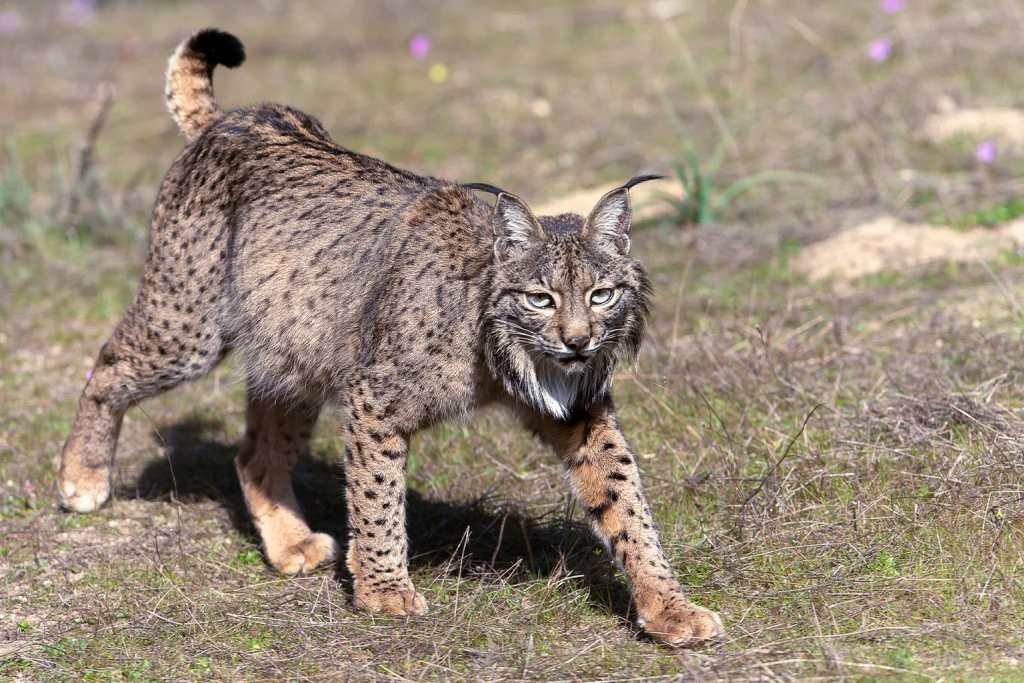The Iberian lynx (Lynx pardinus), once critically endangered, has reached its highest population ever recorded. As of 2024, there are 2,401 wild Iberian lynxes across Spain and Portugal. This 19% increase over the previous year marks a milestone in one of Europe’s most ambitious conservation programs. From fewer than 100 in 2002, the species is now expanding in both range and breeding strength—yet challenges remain. (Iberian Lynx Population Reaches 2401 in 2024)
From the Brink to a Breakthrough: 20 Years of Growth
In 2002, fewer than 100 Iberian lynxes roamed the Iberian Peninsula. By 2020, there were 1,111. In just four more years, that number more than doubled to 2,401 individuals. This growth averages nearly 29% per year, reflecting the success of coordinated conservation between Spain, Portugal, and the European Union.
The Iberian Lynx Working Group’s 2024 census confirms a consistent and positive trend since 2015. Lynxes are now reproducing in 17 distinct areas, up from only two viable breeding populations in 2000.
Regional Breakdown: Where Are the Lynxes?
Spain hosts 85.3% of the total population, with 2,047 lynxes spread across four key regions:
- Castilla-La Mancha: 942 lynxes (46%)
- Andalusia: 836 lynxes (40.8%)
- Extremadura: 254 lynxes
- Murcia: 15 lynxes

The Sierra Morena range remains a stronghold, home to 1,082 lynxes. This includes:
- 638 in eastern Sierra Morena (Jaén and Córdoba)
- 53 in connecting corridors
- 444 in Castilla-La Mancha (Ciudad Real and Albacete)
Breeding Females: Nearing the Conservation Target
A crucial milestone in 2024 was the increase in territorial or breeding females, now totaling 470—up by 64 from 2023. The long-term goal is to reach 750 breeding females, a benchmark for favorable conservation status under IUCN guidelines.
In 2024 alone:
- 844 cubs were born
- The fertility rate reached 1.8 cubs per breeding female
- There were 1,557 adults and subadults, with an even gender split among sexed individuals (708 males, 706 females)
Challenges Ahead: Road Deaths and Habitat Fragmentation
Despite the positive trends, the Iberian lynx still faces serious risks. In 2024, 214 lynx deaths were recorded—75.4% (162 deaths) caused by vehicle collisions. Unnatural mortality remains a major barrier to long-term success.

To address this, Spain and Portugal are expanding their Green Infrastructure and Ecological Connectivity Strategies. These plans aim to reduce roadkill and connect fragmented habitats through wildlife corridors, underpasses, and improved land management.
See also… “Why Spain’s Iberian Lynx Rewilding Success Is Now Under Threat”. https://wildsideholidays.co.uk/why-spains-iberian-lynx-rewilding-success-is-now-under-threat/
What Made This Possible?
MITECO attributes this recovery to a multi-stakeholder effort involving:
- Government-led programs (like Life LynxConnect)
- Public-private partnerships with landowners and NGOs
- EU funding and interregional cooperation
- Long-term data from field monitoring teams in both Spain and Portugal
The Iberian lynx project is now regarded as one of Europe’s greatest conservation successes. However, experts warn that without continued funding, infrastructure changes, and strict enforcement against illegal killing, progress could stall or reverse.

Conclusion: A Symbol of Recovery, but Not Yet Safe
The rise of the Iberian lynx to 2,401 individuals in 2024 is a powerful conservation story. It shows that with coordinated planning, species once considered doomed can return. However, until key threats like road mortality and habitat fragmentation are addressed, the lynx’s recovery remains incomplete.
Further reading
The MITECO news release (in Spanish): https://www.miteco.gob.es/es/prensa/ultimas-noticias/2025/mayo/la-poblacion-de-linces-ibericos-crecio-un-19–en-2024-respecto-a.html
Why Spain’s Iberian Lynx Rewilding Success Is Now Under Threat. https://wildsideholidays.co.uk/why-spains-iberian-lynx-rewilding-success-is-now-under-threat/
Read the complete article about the Iberian lynx here. https://wildsideholidays.co.uk/iberian-lynx-lynx-pardinus-lince-iberico/
I’ve been living in this lovely area of Western Andalucia for the last 20 years or so and dedicate most of my time to the running of English language tourist information websites for the towns of Cádiz, Ronda, Grazalema, the famous or infamous Caminito del Rey, and also Wildside Holidays, which promotes sustainable and eco-friendly businesses running wildlife and walking holidays in Spain. My articles contain affiliate links that will help you reserve a hotel, bus, train or activity in the area. You don’t pay more, but by using them you do support this website. Thankyou!
